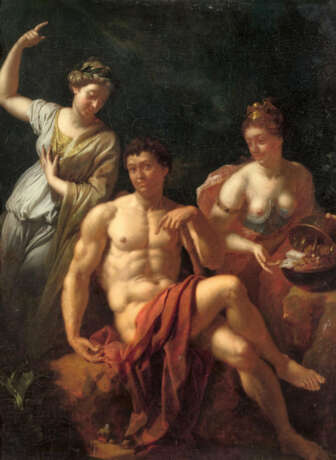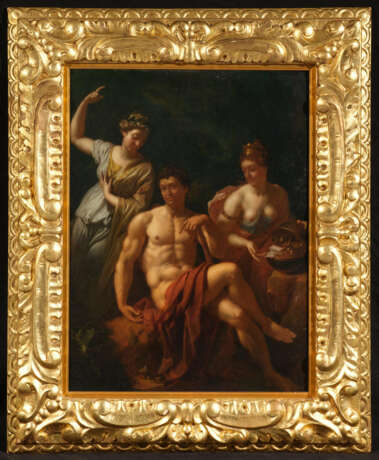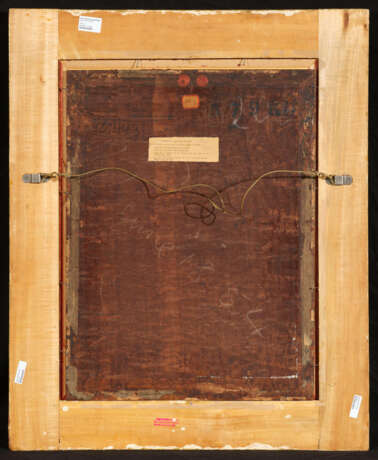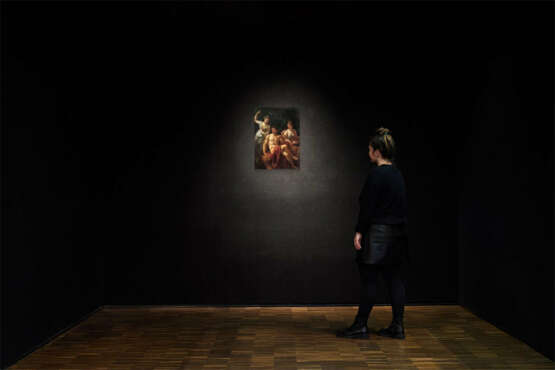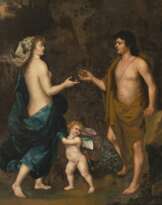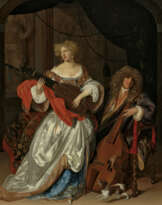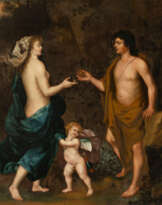ID 1319796
Lot 1226 | Adriaen van der Werff. Hercules between Virtue and Vice
Estimate value
€ 40 000 – 60 000
1659 Karlinger-Ambacht - 1722 Rotterdam
Title:
Hercules between Virtue and Vice.
Date:
1715 (?).
Technique:
Oil on wood.
Measurement:
58.5 x 44.5cm.
Notation:
Signed and dated on the right side (possible residual signature): "[.] erf 715 (?)".
Frame:
Framed.
Literature:
B. Gaehtgens, Adriaen van der Werff 1659-1722, Munich 1987, pp. 252-253, no. 36 with ill.;
Getty Provenance Index databases. J. Paul Getty Trust.
Provenance:
Private ownership, Germany;
Auction Lempertz Cologne, 14th-16th November, 1974, lot. 206;
presumably Sweden, private ownership;
Auction Christie's London, 18th June, 1954, lot. 35;
probably Edward Foster London auction, 19th May, 1830, lot. 48 (as 'Description Hercules accompanied by Wisdom');
Collection John Campbell, 1st Marquess of Bredalbane;
Auction Christie's London, 14th-15th May, 1802, lot 59 (as 'Hercules betwixt Virtue and Pleasure [...] the figure of Hercules is perfect in drawing, and the expression of all the figures admirable');
Sir Simon Clarke Collection; George Hibbert, until 1802;
Collection Jan Jansz. Gildemester, Amsterdam;
Alexandre-Joseph Paillet Collection, Paris, from 1786 (as 'Un Tableau allégorique de ce Maître, représentant Hercule entre le vice & la vertu');
Auction Jean J. Bertels London, 8th-9th May, 1783, lot 76 (as 'Hercules between Virtue and Vice; one of the best preserved pictures of this inestimable artist, whose fame is so well known to the great world');
Sir Gregory Page Collection, Brussels, until 1783;
the painting can presumably be identified with the one described in an offer for sale by the merchant Boendermaker in Amsterdam dated 12th August, 1719 ('Hercules, sitende jongh sijnde, te denken; werd angevogten door twee vrouwen de eene de Deugt, de andere de Ondeugt, ofte Wellus').
Adriaen van der Werff is one of the protagonists of so-called Dutch Classicism, an era around 1700 in which artists liberated art from overly naturalistic or caricaturistic tendencies. He was often modelled on antique sculptures or the masters of the Italian Renaissance and early Baroque.
Van der Werff is regarded as one of the Dutch artists of his time, who enjoyed the highest international reputation among his contemporaries and was admired and sought after by important collectors. Born near Rotterdam, van der Werff completes his training in the workshops of Cornelis Picolet and Eglon Hendrick van de Neer in Rotterdam and sets up his own business as a painter in 1676. From 1691 to 1695 he is head of the St Luke's Guild in Rotterdam and from 1697 he is court painter to John William of the Palatinate, with whom he has to spend six months a year.
He is characterised above all by his small and medium-sized works, in which he applies meticulous attention to detail, refined sensuality, and a nuanced texture of flesh tones reminiscent of porcelain.
His choice of subject matter also reflects the fashions of the time: initially he specialises in genre paintings, often with allegorical themes, and later in mythological, historical and biblical scenes, and portraits.
The present painting, which was probably created at the court of Johann Wilhelm von der Pfalz, fits precisely into this category: it shows Hercules at the crossroads, flanked by two beautiful women, Vice on the right and Virtue on the left. The iconographic theme, of which there are numerous examples in the Renaissance, goes back to a fable by the Greek philosopher Prodicus of Keos, who lived between the 5th and 4th centuries BC and was passed down to us through the memorabilia of Xenophon. In the fable, two women appear to the young Hercules, one of whom presents herself as virtue and the other as happiness (or corruption). Each of them explains to the young hero the merits of one lifestyle or the other and tries to persuade him to follow the appropriate path.
Adriaen van der Werff's work is clearly inspired by sculptures from the Greco-Roman period; the figure of Hercules in particular is reminiscent of the Belvedere torso, which was known from numerous engravings from this period or from copies and casts.
| Artist: | Adriaen van der Werff (1659 - 1722) |
|---|---|
| Applied technique: | Oil |
| Auction house category: | Old Master Paintings |
| Artist: | Adriaen van der Werff (1659 - 1722) |
|---|---|
| Applied technique: | Oil |
| Auction house category: | Old Master Paintings |
| Address of auction |
VAN HAM Kunstauktionen GmbH Hitzelerstr. 2 50968 Köln Germany | ||||||||||||||
|---|---|---|---|---|---|---|---|---|---|---|---|---|---|---|---|
| Preview | |||||||||||||||
| Phone | +49 221 92586215 | ||||||||||||||
| Fax | +49 221 92 58 62 4 | ||||||||||||||
| Buyer Premium | 32% | ||||||||||||||
| Conditions of purchase | Conditions of purchase | ||||||||||||||
| Business hours | Business hours
|
